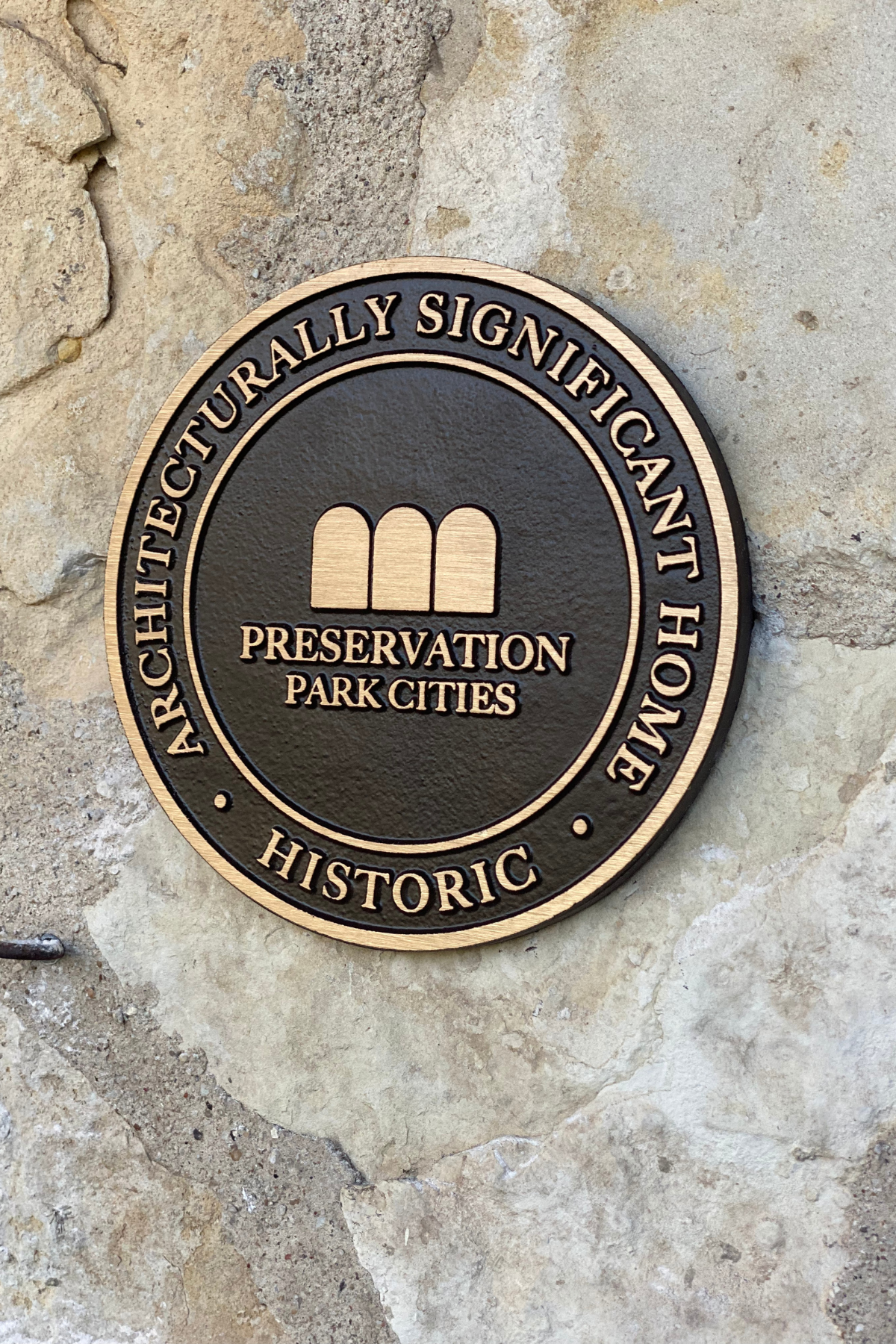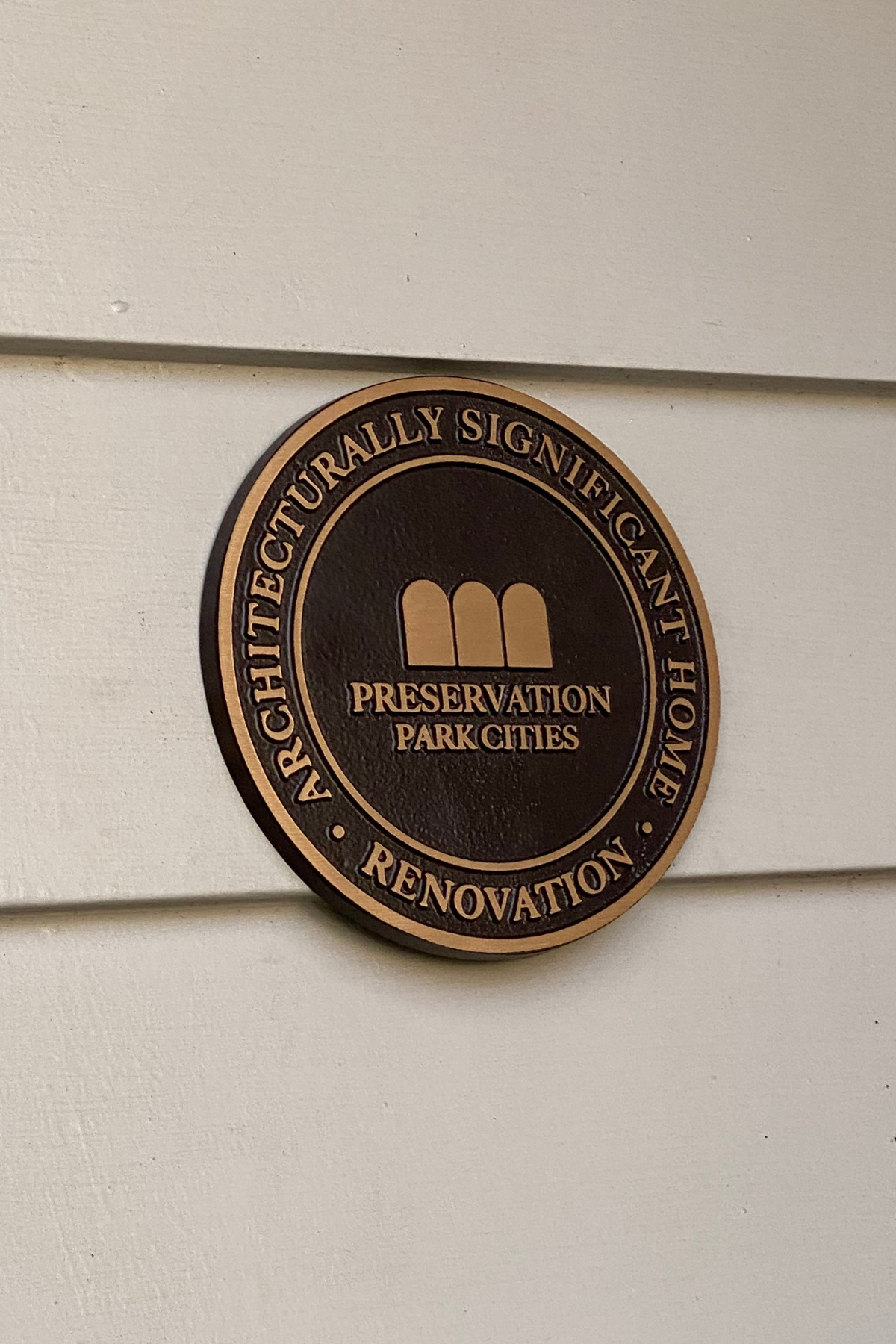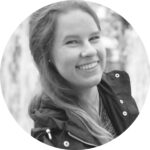On a brisk and sunny morning last weekend, early risers jogged along St. Johns Drive and played tennis at the nearby courts. Redbuds bloomed. Birds flitted about the scraggly early-spring trees in Davis Park. A small crowd of a dozen or so friends and neighbors, and one white-faced golden retriever, gathered in the front drive of 4606 St. Johns Dr., which last year was named as one of the most historically significant homes in the Park Cities.
Beginning at 9 a.m. last Saturday, historical society Preservation Park Cities organized an event to highlight four architecturally significant homes: 4606 St. Johns Dr., 4331 Belclaire Ave., 3501 Drexel Dr., and 3517 Drexel Dr. The organization presented the properties with brass landmark medallion plaques. At each house, the homeowners, if present, shared anecdotes of their lives within the walls.
Larry Good, a retired architect who’s led Preservation Park Cities’ charge in identifying the municipalities’ most significant homes, gave a short talk about each property’s histories and why they were receiving a plaque.
Unlike state-issued historical markers, the shiny brass Preservation Park Cities plaque has no legal weight. It doesn’t provide any protections to the structures. “It’s simply a designation from our organization that says, ‘hey, this house is special in a number of ways,’” says Burton Rhodes, the president of Preservation Park Cities.
In its various iterations throughout the past 41 years, Preservation Park Cities has been working to preserve the area’s historic homes and character, Rhodes says, but “we have no teeth.”
Many Dallas neighborhoods have historic and conservation districts, like the M Streets, Swiss Avenue, and King’s Highway. These neighborhood-led designations limit the additions and changes a homeowner can make to their property. For example, in the Lakewood Conservation District, roof skylights are prohibited, porte-cocheres cannot be enclosed, and the body of a home’s façade cannot be painted black. Any changes must be permitted, and new dwellings can only be built in one of four architectural styles.

University Park and Highland Park are separate municipalities that do not have any ordinances or protections for homes deemed historical. University Park does have several objectives1 to help protect the city’s historic character listed in its centennial master plan. And Highland Park does notify Preservation Park Cities when it issues demolition permits. But Rhodes says past proposed ordinances were shot down by the towns’ governments. Generally, designations are driven by the people who live in these communities.
“Property rights are king in these neighborhoods,” he says. If a builder wants to come in, tear down an old home, and construct a new one, there is nothing stopping them, besides normal permitting.
And over the years, many builders did just that.
“Park Cities is notorious for builders coming in and tearing down the few architecturally significant houses that we have,” says Sandra Roberdeau, the homeowner of 4606 St. Johns Dr.
Newcomers don’t necessarily have the same appreciation for their neighborhood’s history, Rhodes says. Many want bigger houses than what’s already there, says Patrick Baugh, University Park’s director of community development.
At one point, there would be as many as four demolition permits issued in the Park Cities each week, Good says. While standing on his front porch Saturday morning, Tom Rhodes, homeowner of 3517 Drexel (and Burton’s father), points out three newly built homes on his block.
“They’ve moved from a house that you would look at and say, ‘yeah, that house needs to be torn down,’” Tom Rhodes says. “They’ve past that long ago. And now they’re tearing down some really, really nice homes.”


Because there aren’t any legal protections they can use to save these properties, Preservation Park Cities has fallen back on education and promotion, Burton Rhodes says. That’s where the landmark plaques came from. “Although we can’t put rules in place that somebody else couldn’t tear [it] down,” he says, “we want people to know that we value this house, and you should do.”
Over the years, Preservation Park Cities has landmarked more than 230 houses and structures. More than two dozen of those homes have since been razed, according to Preservation Park Cities’ documentation.
Rhodes says the organization landmarks four-to-10 houses a year. Homeowners apply for one of two designations: historic, which has finer criteria, or renovation, where the house has been altered but the changes keep with the original design. The organization had to add renovation, Rhodes says, because it was running out of untouched old houses. During the application process, a committee considers the home’s original design, its architect, and what’s been done to it.
Some homeowners don’t want the designation, Rhodes says, because they are afraid it’ll hurt their home’s resale value if potential buyers think it has historical protections. Others prioritize property rights, even if they appreciate the history of their homes. During the landmarking ceremony for the Belclaire house, homeowner Fred Baker emphasized that he didn’t want a future owner to be “not able not to tear it down [sic].”
Others, still, want the plaque, even if it can’t legally protect the home.
“I know it won’t stop someone from tearing it down if the house is sold at some point,” says Roberdeau, “but at least they’ll maybe think about it more than once.”
Get the AtHome Newsletter
Author







